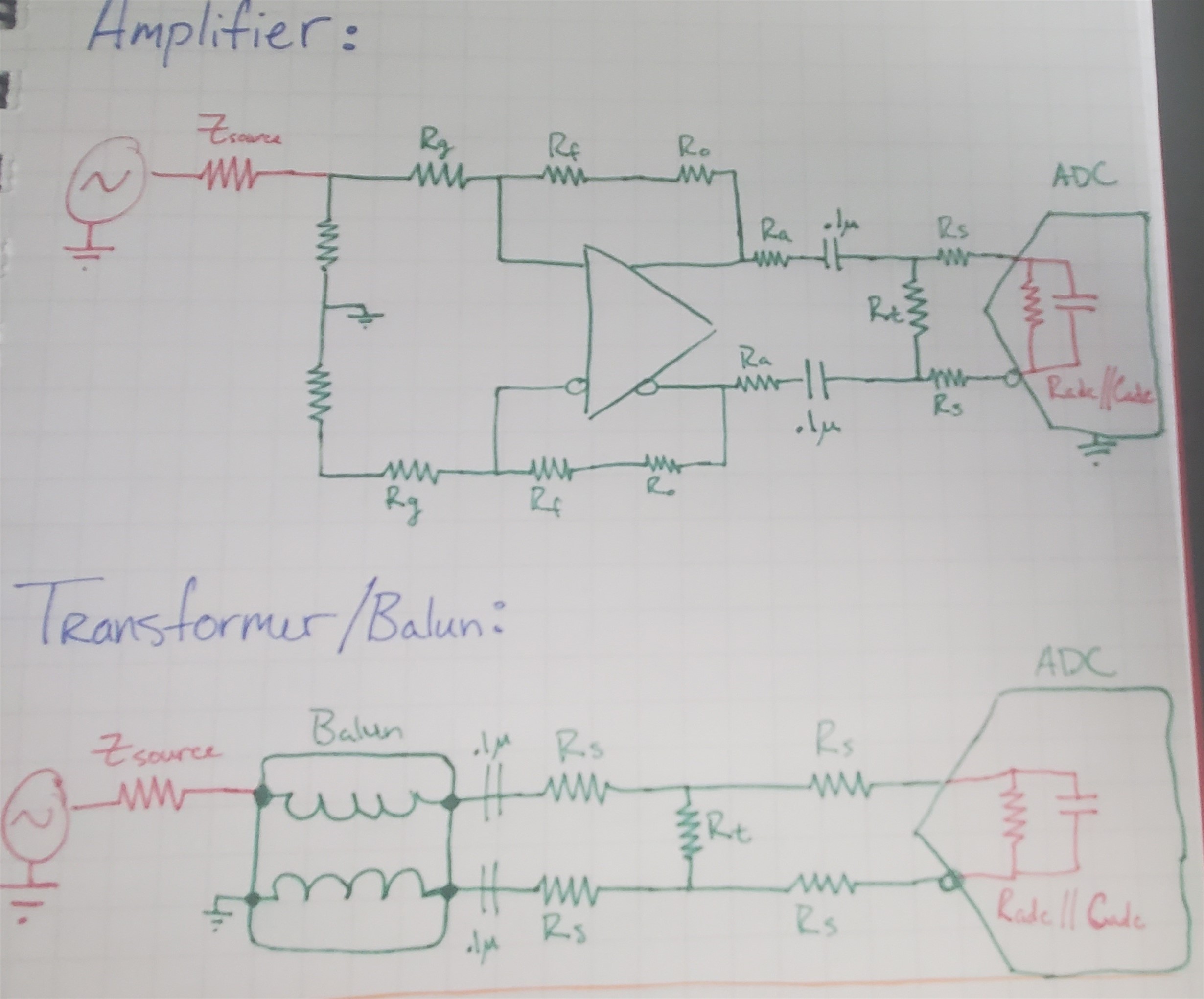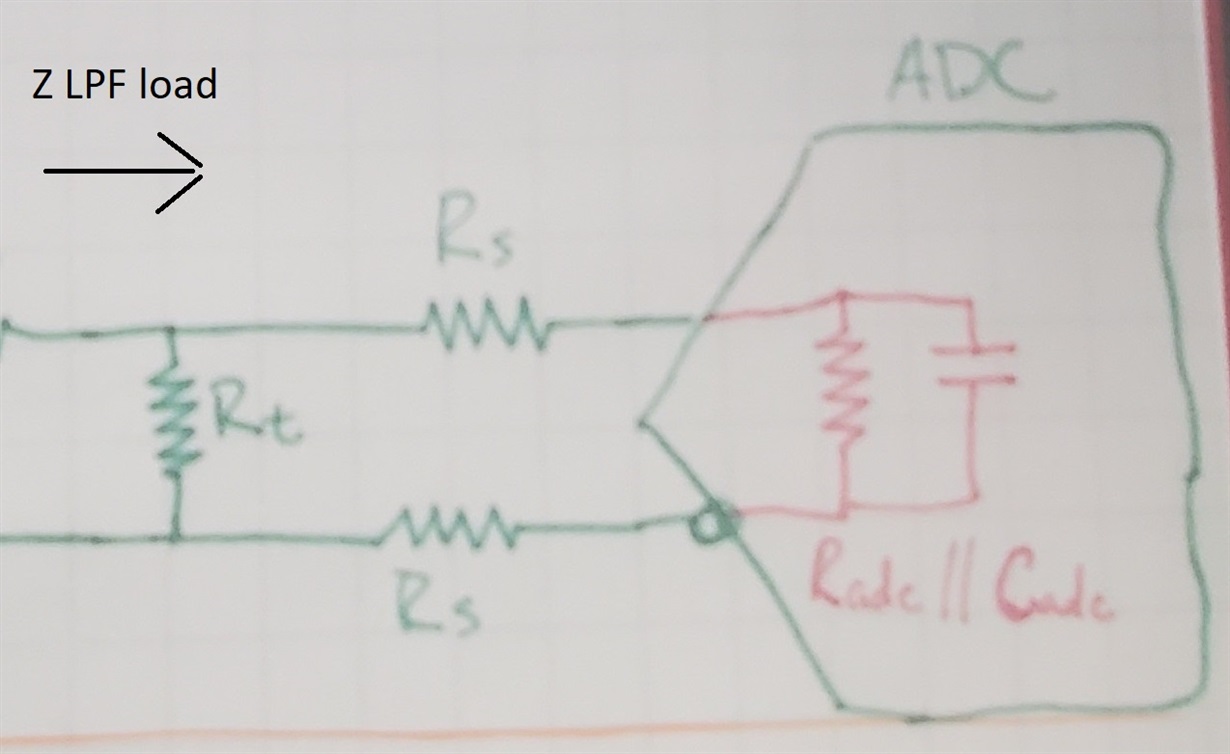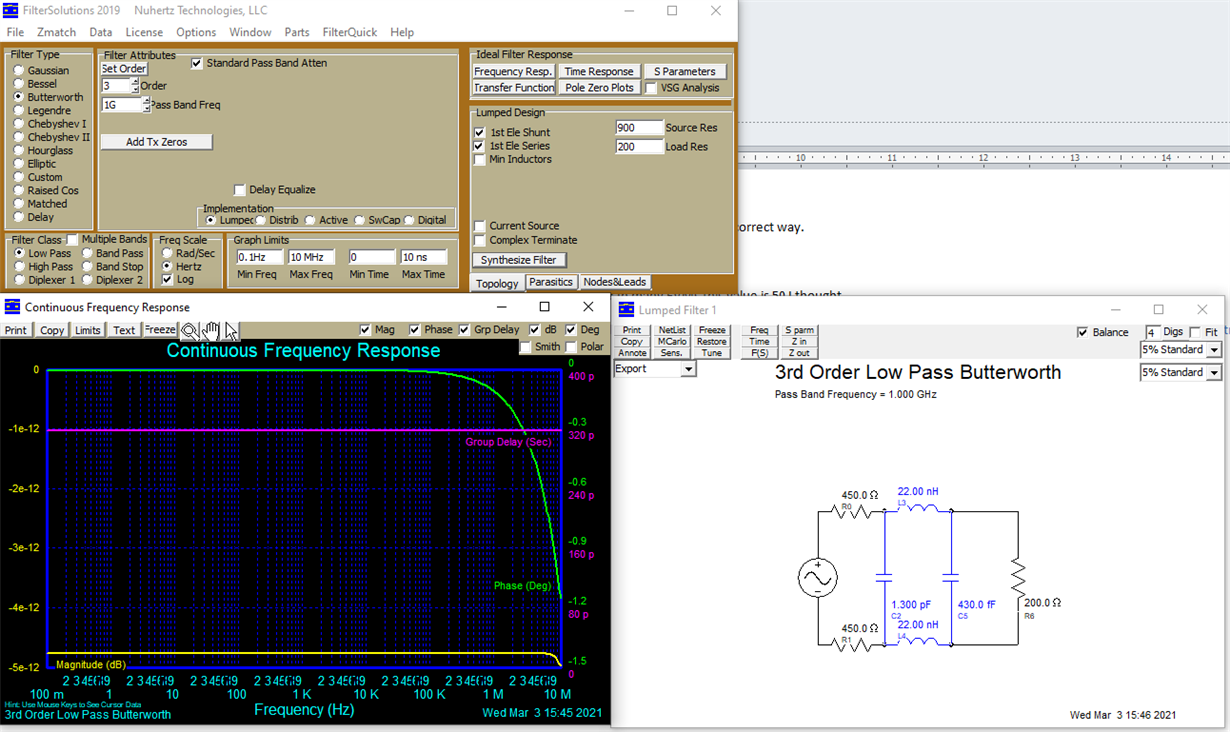Other Parts Discussed in Thread: THS4541, , ADC3643EVM,
I am working on an application where I must use an ADC344x series device hooked to a device with an output impedance of 6.6 K ohm in parallel with 3.6 pF. I understand that the input impedance of the ADC344x device is 9K ohm differential. I want to use a differential circuit. But, rather than just interface, I need to include a low pass filter for anti-aliasing. I am hoping I can do this passively, but I suspect I will at least need one amplifier to convert the 6.6 K in parallel with 3.6 pf to a lower impedance. Is this correct? What would a good circuit look like to interface and convert impdeance levels between these two devices? Also, because we are dealing with a relatively low cutoff frequency, I am hoping to keep the impedance value for the LPF to 200 ohms or even less, but I don't know if this is possible.




